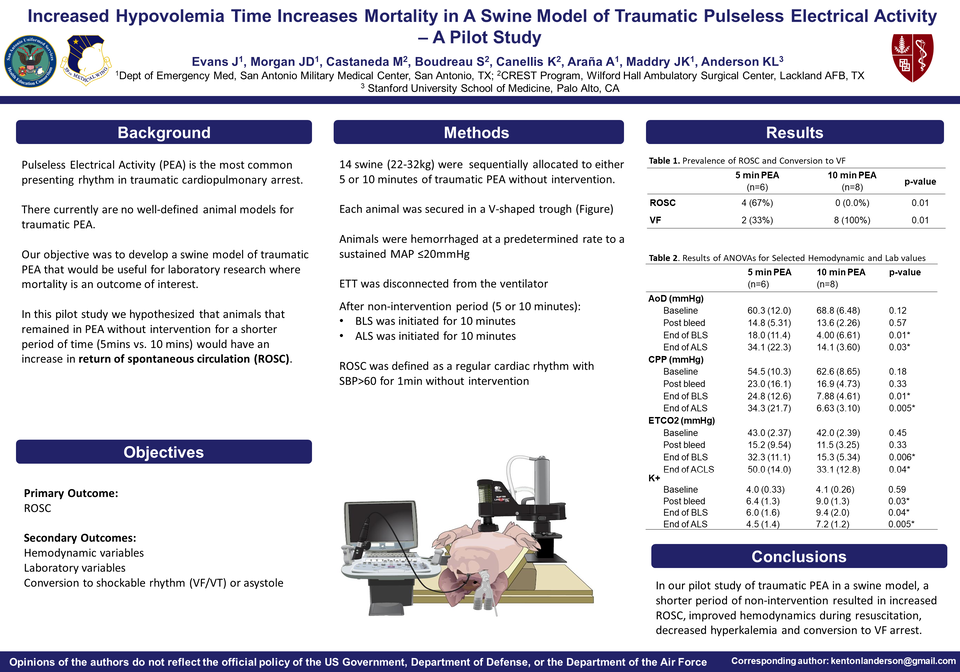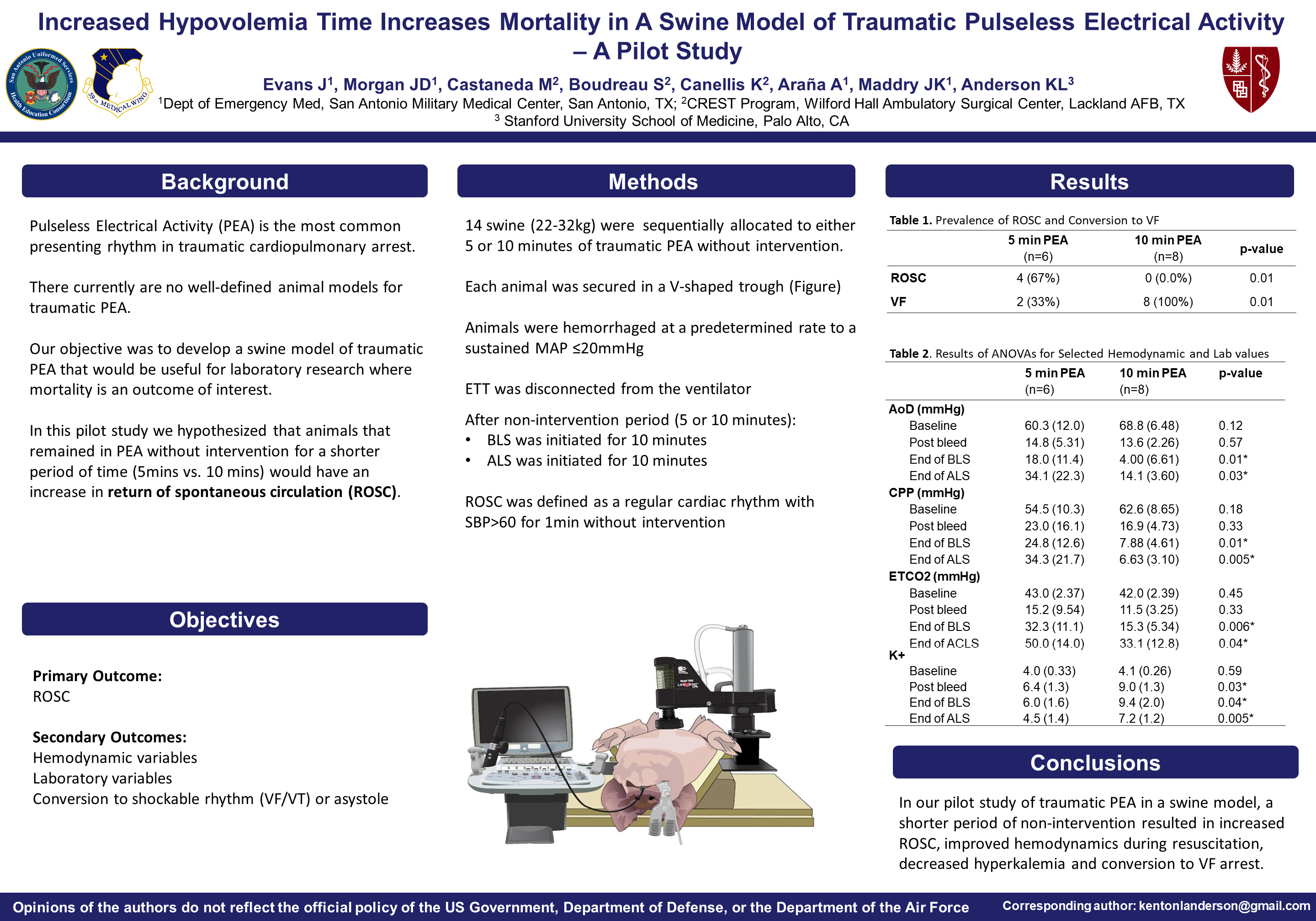Abstract
Introduction: Pulseless Electrical Activity (PEA) is the most common presenting arrhythmia in traumatic arrest. There currently are no well-defined animal models for traumatic PEA arrest. Our objective was to develop a swine model of traumatic PEA arrest that would be useful for laboratory research where mortality is an outcome of interest.
Hypothesis: In this pilot study we hypothesized that animals that remained in PEA without intervention for a longer period of time would have increased mortality. Secondary outcomes included hemodynamic variables, laboratory variables, and conversion to shockable rhythms (ventricular fibrillation [VF], ventricular tachycardia [VT]) or asystole.
Methods: 14 Yorkshire swine were sequentially allocated to either 5 or 10 minutes of traumatic PEA without intervention. After the non-intervention period, basic life support (BLS) with mechanical cardiopulmonary resuscitation (CPR) was initiated and performed for ten minutes followed by advanced life support (ALS) for an additional ten minutes. Hemodynamic and laboratory values are reported for baseline, post-hemorrhage, end of BLS and end of ALS periods.
Results: Mortality in the 10-minute PEA group (100%) was higher than in the 5-minute group (33%) (p=0.01). Animals in the 5-minute group had improved aortic diastolic blood pressure coronary perfusion pressure and end tidal CO2 at the end of both the BLS (p=0.01, 0.01, 0.006) and ALS (p=0.03, 0.005, and 0.04). The 10-minute animals had increased hyperkalemia at the end of the BLS (p=0.04) and ALS (p=0.005) periods. All animals in the 10-minute group developed VF and 33% of the 5-minute animals developed VF (p=0.01).
Conclusions: In our pilot study of traumatic PEA in a swine model, a shorter period of non-intervention resulted in increased survival, improved hemodynamics during resuscitation, decreased hyperkalemia and less incidence of conversion to VF arrest. A 5-minute period of non-intervention may be more useful than a 10-minute period when performing traumatic arrest studies where survival and hemodynamics are important outcome measures.






